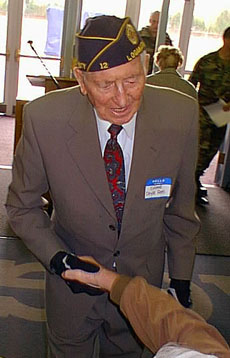

|
Interview With Doyle Rees, Col. USAF, ret.

The U. S. Army Air Forces (USAAF) became an independent Service in September 1947. Shortly after the establishment of the U. S. Air Force, a new investigative service was launched different in character from the other Services. The Air Force Office of Special Investigations (AFOSI) combined a number of functions which had previously been separate in the USAAF. The AFOSI mission included counter-intelligence, criminal investigations, certain functions under the Air Inspectors Office, and some intelligence functions. OSI did not take all such functions under its control, but in many cases it was the lead agency for serious criminal, contract fraud, counter intelligence or other such investigations. The Office of Special Investigation also was unique in that it came under the Office of Inspector General which had its own investigative functions in assuring compliance with Air Force policies and programs, breeches of regulations and assessment of compliance with laws and regulations. OSI could be used by the Inspector General (IG) to investigate matters which come under IG's areas of mission and interest. The functions and mission of the OSI incorporated lessons learned by the USAAF during World War II. Joseph F. Carroll came over from the Federal Bureau of Investigations to head the OSI, and ended his career as a Lieutenant General in the Air Force. Certain assets and personnel of the Army Counter Intelligence Command serving with the Air Force were transferred to the OSI. Colonel Doyle Rees was a lawyer, not an intelligence officer, who had experience in cases involving fraud and the defrauding of the Air Force by contractors. He was appointed to command the newly created 17th District in which included New Mexico and parts of Texas. He would soon become embroiled with "the flying discs and green fire ball investigations." In this endeavor he was assisted by Dr. Lincoln LaPaz, head of the Institute of Meteoritics at the University of New Mexico and recognized expert on meteors. According to LaPaz's university records, his services were provided for free. (LaPaz had previously been able to enlist the military's assistance in tracing meteorite recovery.) The "green fire ball" phenomenon involved sightings of bright green meteor like phenomenon all over the Southwest and attracted the attention of the scientists at Los Alamos and other facilities. The Air Force finally asked assistance from Dr. Joseph Kaplan who made a special oral presentation on the problem to the Air Force Scientific Advisory Board in 1949. LaPaz had witnessed both UFOs and green fireballs, while Col. Rees was more than a little skeptical of flying saucers, he was convinced that green fireballs were a reality as he and his wife had both witnessed them. The 17th OSI District compiled over 209 reports of UFOs and green fireballs spanning a time frame of 1943 to 1950. The USAF decided to investigate the green fireball phenomenon using a special program, Project Twinkle. Col. Doyle Rees had left the 17th District by this time and had no more connection with the UFOs for the rest of his career. The Sign Historical Group chairman, Thomas Tulien, interviewed Col. Rees for the Sign Oral History Project. Rod Brock and Candy Peterson transcribed the interview. Thomas Tulien's Interview can be found on the Sign Oral History Project website at:
-- Jan L. Aldrich.
Links to items related to Col. Doyle Rees:
Air Force Office of Special Investigations Home Page
USAF.COM: USAF Office of Special Investigations
Air Force Fact Sheet on OSI
http://www.af.mil/information/factsheets/factsheet.asp?fsID=145
Air Force Office of Special Investigations
Air Force Mission Directive 39,
Secretary of The Air Force
Office of The Inspector General
Green Fireballs
Conference on Aerial Phenomena (Transcript)
Held on 16 February 1949, in conference room P-162,
Conference of the Scientific Advisory Board (Transcript)
Letter to General Carroll on Green Fireballs
|
||